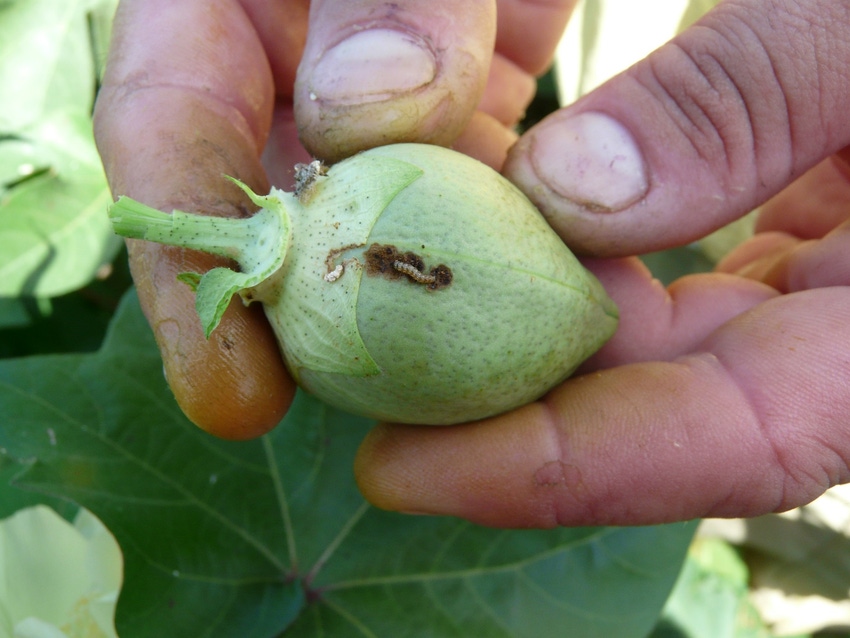
Extension entomologists say some of the older commercially available Bt cotton varieties remain important tools in pest management strategies, but with identified bollworm resistance, growers should be prepared to take additional control measures.
The problem begins in corn where the same Bt technology used in cotton allows worms to build resistance before they move into cotton fields.
LSU Extension entomologist Dr. Sebe Brown, speaking at the February Louisiana Technology and Management Conference in Marksville, La., explained: “We’re seeing a reduction in susceptibility of bollworm to older Bt technology. Bollworm resistance is selected in corn before moths come into cotton. Bollworms are being exposed in corn, and bringing whatever reductions in susceptibility or resistance they develop. That sets us up for failure.”
He says most bollworms migrate out of corn. “A few may be moving in from soybeans or grain sorghum, but most come from corn.”
It’s not just a Louisiana problem, Brown says. “Entomologists across the Cotton Belt believe the Cry1 has been exhausted, and Cry2 is up in the air. We fear that we are going to lose it. An 8 percent damage level in Bollgard II cotton is alarming.
“Resistance to Cry 1 and Cry 2 is becoming more widespread. We are seeing a lot of variability with Cry 2 resistance from high resistance to not as much. Cry2 resistance may be field-to-field,” Brown says. He adds that Mid-South and Texas entomologists also report resistance.
Bollgard II technology may still be worth the price of technology fees. “It still provides excellent control of tobacco budworm, but farmers may have to make insecticide sprays for bollworm,” Brown says.
Those applications may depend on the level of bollworm infestation. High populations, Brown says, are more likely to need an insecticide. Lower populations may not. He recommends growers give the Bt technology, especially the third generation or VIP cotton, a chance to work, “but be timely with applications if control breaks down.”
Mitigation plan
Cotton producers need a mitigation plan to manage the Bollgard II, WideStrike and TwinLink varieties, Brown warns. “Opt for the most robust technology possible,” he advises. That should include newer technology — Bollgard 3, WideStrike 3, or TwinLink Plus, along with aggressive scouting. If worms break through, especially in weaker technologies — Bollgard II, WideStrike or TwinLink — make an application as quickly possible with the proper rate and gallonage of Prevathon or Besiege.
“Target small larvae; they are harder to control once they get into the canopy. Spraying based on egg lay may not be applicable in certain situations,” he says. “Also, we have no evidence of efficacy for spraying adult moths migrating into cotton fields, and those applications may flare other pests.”
Brown says producers should consider 6 percent damage with live worms present a threshold for spray application. “If producers make it to 6 percent, that’s an indication to spray; however, if a large egg lay has occurred in weaker or second generation Bt technologies, an egg spray with Prevathon or Besiege may be justified.
Brown says technology available to cotton producers for the past two years offers promise. “VIP technology is a better package than Bollgard II, WideStrike or TwinLink,” he says. “This is not new technology; VIP has been used in corn for nine years, but it has just recently been available in commercial cotton varieties. It offers much better control.”
He’s seen very few worm breakthroughs in VIP technology in cotton. “It is still effective; worms are susceptible to it.” He adds a note of caution that VIP technology has been available in corn for nine years and bollworm selection on VIP corn is occurring.
“None of the technology is bulletproof,” Brown said. “Producers should scout for worms and be ready to apply insecticide.”
About the Author(s)
You May Also Like






